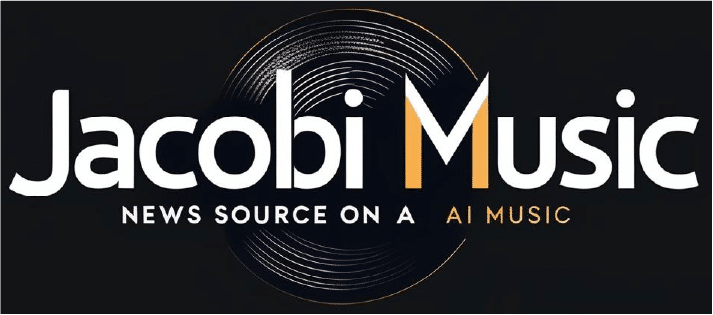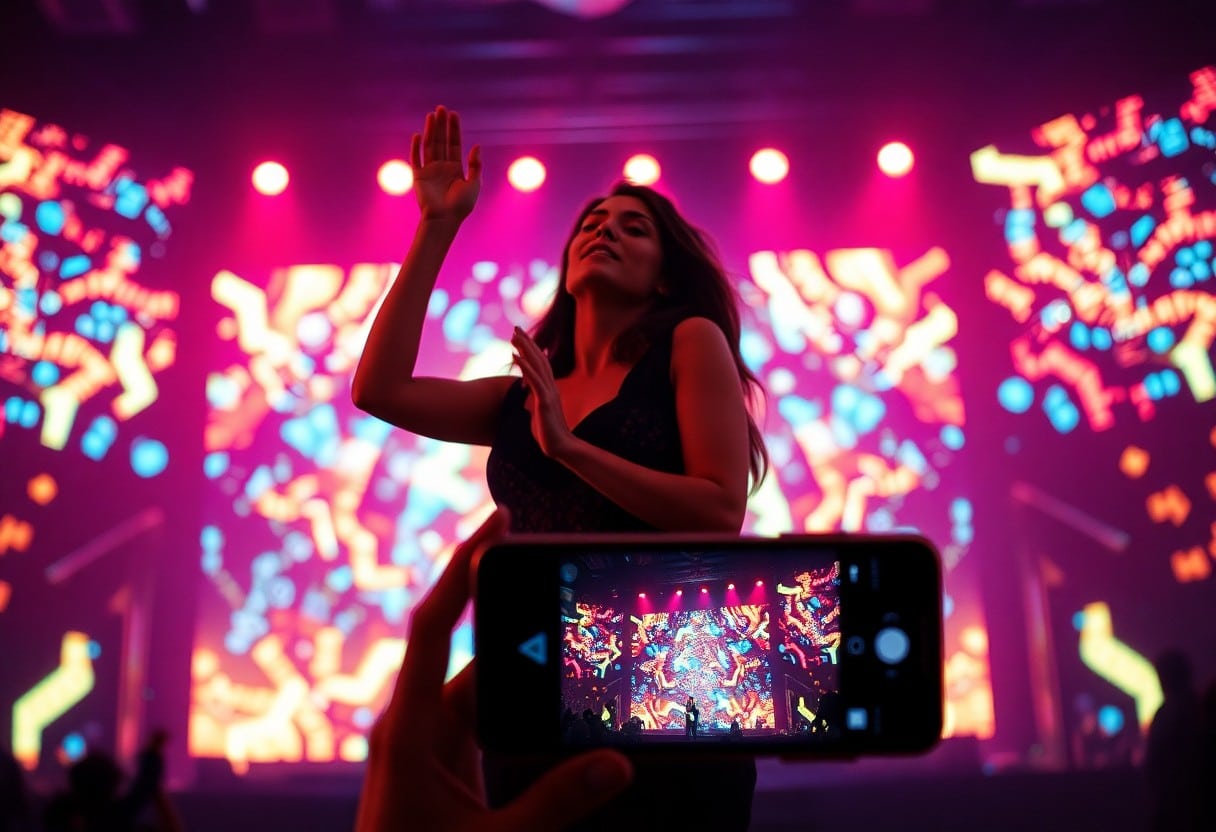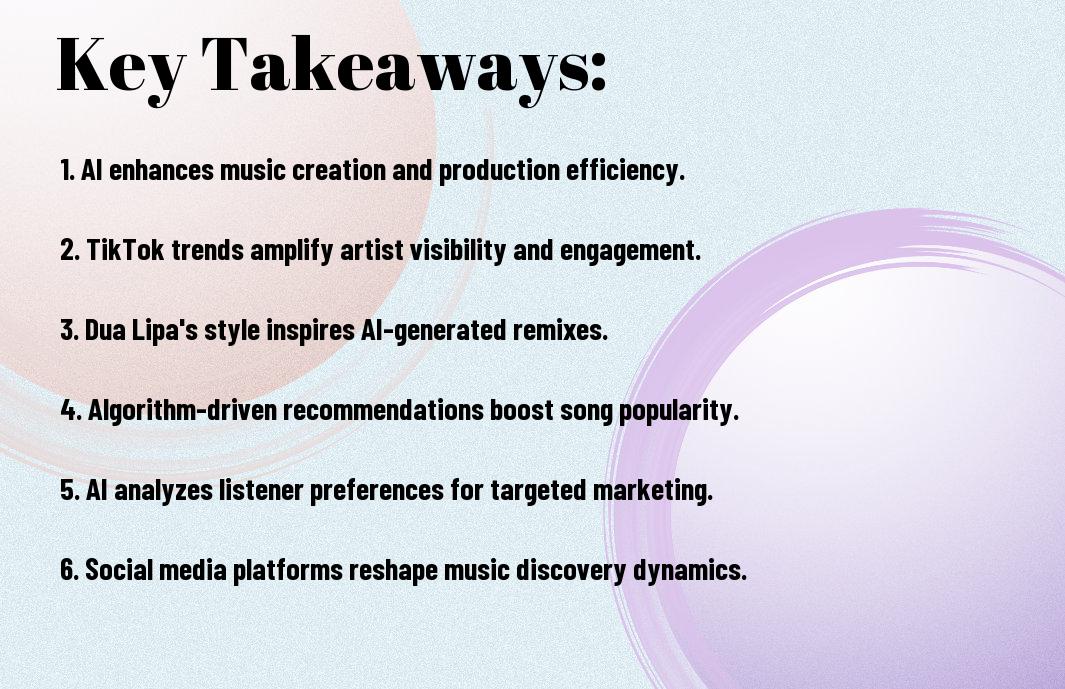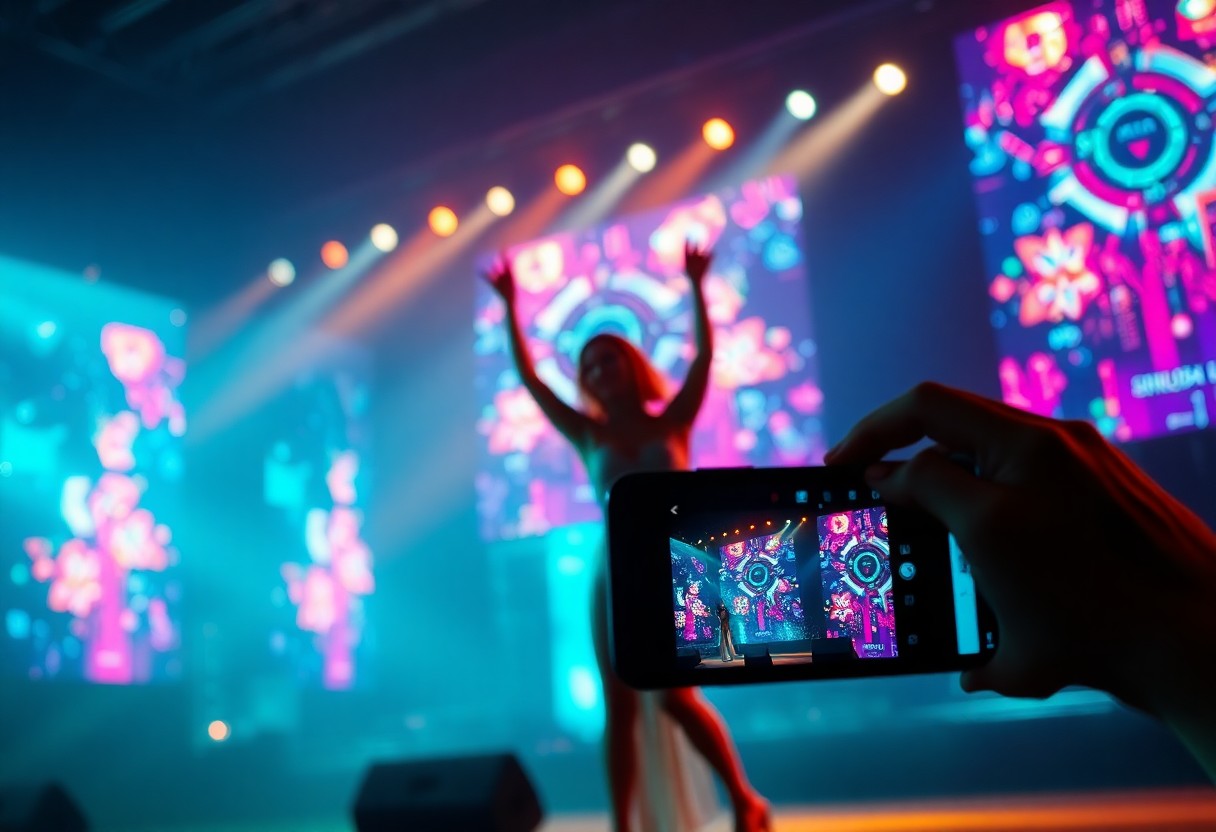AI is transforming how we engage with music, and Dua Lipa’s viral TikTok hits are a prime example of this phenomenon. In this post, I’ll explore how artificial intelligence plays a role in the popularity of her tracks, from creating catchy remixes to enhancing user-generated content. You may be surprised to discover how AI algorithms not only shape what you hear but also influence the way you share and consume music on platforms like TikTok. Let’s look into the world of Dua Lipa and see how technology amplifies her artistic expression.
The Role of AI in Music Production
To probe the impact of AI on music production, I find it fascinating how these technologies have reshaped the landscape. By leveraging algorithms and machine learning, artists like Dua Lipa can achieve a level of precision and creativity that was once nearly impossible. AI tools assist in identifying trends, suggesting melodies, and even mastering tracks, allowing musicians to focus more on their artistic vision than ever before.
Innovative Tools and Technologies
Across the music industry, AI-driven tools are transforming the way artists and producers create sound. From integrated software that can analyze listener preferences to platforms offering instant feedback on compositions, these technologies enable musicians to innovate and collaborate more efficiently. Keep an eye on evolving AI tools as they continue to push creative boundaries.
Enhancing Creative Processes
Above all, AI plays an instrumental role in enhancing the creative processes of music production. By using AI tools, I can explore various musical styles and structures that I might not have considered otherwise. This technology can provide inspiration, recommend chords, or even suggest lyrics, effectively acting as a co-creator in the studio. Through AI, I’m able to push my creative limits, leading to unique and engaging musical outputs.
Considering how AI enhances creative processes, I see it as a vital partner rather than a replacement. It prompts me to think outside the box and experiment with new sounds, which fuels my artistic journey. The ability to generate ideas and refine them through AI allows me to take risks, ensuring that my music resonates with evolving listener expectations while still maintaining my unique style. This synergy between AI and human creativity truly enriches my musical production experience.
Analyzing Dua Lipa’s Viral Hits
If you’ve ever scrolled through TikTok, chances are you’ve encountered Dua Lipa’s catchy hooks and infectious beats. Her viral hits not only dominate the charts but also resonate deeply with the platform’s audience. By examining her musical style, lyrical themes, and engagement with users, we can better understand the formula behind her success in the digital age.
Key Elements of Her Success
Success in entrepreneurship often involves a mix of talent, timing, and relatable content. Dua Lipa’s catchy melodies, empowering lyrics, and visually stunning music videos create an accessible brand that resonates with fans worldwide. Her ability to engage with her audience on social media also fosters a sense of community, giving her hits an additional lift toward virality.
The Impact of AI on Popularity
Lipa’s integration of AI technologies has transformed the way her music reaches listeners, elevating her popularity. The AI tools help analyze trends, optimize song structures, and even generate personalized content for fans, creating a more tailored experience.
With AI algorithms analyzing listener preferences and predicting trends, I’ve noticed that Dua Lipa’s team can fine-tune her songs to maximize engagement. This not only aids in the creation of music that resonates with fans but also helps ensure her music goes viral on platforms like TikTok. As AI continues to evolve, I suspect it will play an even larger role in shaping the musical landscape, further propelling artists like Dua Lipa into the limelight.
TikTok as a Platform for Music Distribution
Despite the many traditional avenues for music distribution, TikTok has emerged as a game-changer, allowing artists like Dua Lipa to reach audiences more rapidly and effectively. The platform’s algorithm promotes content based on engagement rather than follower count, enabling even new or independent artists to go viral overnight. This democratization of music exposure has transformed how I discover and interact with new songs, making TikTok a vital part of today’s music industry landscape.
Trends and User Engagement
To maximize user engagement, TikTok encourages short, catchy content that keeps viewers coming back for more. The platform’s trend-driven nature inspires user creativity, often resulting in spontaneous dance challenges or lip-syncing that enhance song visibility. I see how these trends create a communal experience that connects fans and artists, furthering the emotional resonance of the music itself.
AI’s Influence on Viral Trends
To understand how AI is shaping viral trends, it’s important to recognize that algorithms are now curating content tailored to user preferences, making it easier for songs to achieve virality. When I consider how much easier it is for an upbeat track to trend based on engagement metrics alone, it’s evident that AI plays an integral role in pairing the right music with the right audience.
Understanding AI’s influence on viral trends can lead to exciting insights about music consumption. AI algorithms analyze user behavior, allowing for more personalized recommendations and trend curation. For instance, when I like a particular song-related video, the algorithm suggests similar tracks, amplifying their reach. This cycle of engagement can turn a new release into a viral sensation, as I and others join in promoting the content through our interactions. Thus, artists have the opportunity to capitalize on these trends, creating a symbiotic relationship between AI and music that drives popularity in a real-time, interactive format.
Case Studies of Dua Lipa’s Hits
Unlike many artists, Dua Lipa’s viral TikTok hits demonstrate a unique blend of creativity and technology. The following case studies illustrate the impact of AI and trends:
- “Levitating”: Over 1.5 billion streams on Spotify, with 500k+ TikTok videos featuring the song’s audio.
- “Don’t Start Now”: 1.6 billion views on TikTok, boosting its popularity through AI-driven recommendations.
- “Physical”: Generated 300k+ user-created videos within weeks of release, showcasing its appeal on the platform.
You can explore more about the innovative use of Dua Lipa Ai Voice in her tracks.
“Levitating” and AI Integration
Case studies reveal how “Levitating” harnesses AI technology to engage listeners. The track’s catchy rhythm aligns with trending sounds on TikTok, propelling it into viral status, and its AI-derived vocals give it a fresh, contemporary feel that captivates audiences.
“Don’t Start Now” and Algorithmic Success
The phenomenon surrounding “Don’t Start Now” can largely be attributed to algorithmic success on social media. TikTok’s algorithms have effectively matched the song to user preferences, leading to increased visibility and interaction.
And it’s fascinating to see how the combination of algorithm-driven recommendations and viral dance challenges has solidified the track’s place in popular culture. With millions of users engaging with its audio, the song’s prominence is a testament to how algorithmic insights can foster artist engagement and audience connection.
Future Trends in AI and Music
All indications suggest that AI’s role in music will continue to expand in exciting and innovative ways. As technology advances, artists can expect more sophisticated tools that enhance their creative processes and streamline production. From personalized music recommendations tailored to individual tastes to AI-generated compositions that push artistic boundaries, the future looks bright for the fusion of AI and music.
Predictions for the Industry
Along with the advancement of AI, I foresee a future where artists leverage machine learning algorithms to analyze emotional responses to their music, enabling them to craft songs that resonate more deeply with audiences. As audiences increasingly gravitate toward tailored experiences, understanding these insights will be more imperative than ever.
The Evolution of Artist-Technology Collaboration
Predictions show that the relationship between artists and technology will evolve dramatically in the coming years. With AI serving as both a collaborator and a tool, musicians will find new ways to create and perform that were previously unimaginable.
For instance, I envision a future where artists co-create with AI systems, using algorithms to explore uncharted musical territories. This partnership could lead to extraordinary compositions, where AI analyzes vast datasets of musical history to generate innovative melodies and harmonies. As artists increasingly lean on technology for support, I expect to see a new genre of music emerging that harmonizes human and machine creativity.
Ethical Considerations in AI Music
After delving into the impact of AI on Dua Lipa’s viral TikTok hits, it’s vital to consider the ethical implications surrounding AI in music creation. As the integration of technology in artistic endeavors grows, questions arise regarding copyright, ownership, and the authenticity of human expression in this evolving landscape. You may find yourself pondering how these ethical challenges can shape the future of music and its creators.
Copyright and Ownership Issues
Beside the artistic questions lies the complex realm of copyright and ownership. When AI generates music, it can be unclear who holds the rights. This ambiguity can create disputes among artists, producers, and AI developers. As you navigate this landscape, I encourage you to consider how this impacts the creative process and the rights of those involved in bringing a musical piece to life.
The Role of Human Creativity
Among the many discussions in AI music, the role of human creativity stands out. While AI can generate melodies and beats, it lacks the emotional depth and personal connection that human artists bring. I believe that your unique experiences, feelings, and cultural background significantly contribute to music’s resonance in people’s lives. AI can serve to complement your creativity, but it cannot replicate the intrinsic human qualities that define truly impactful music.
This interplay between AI and human creativity highlights the importance of maintaining a balance. As music continues to evolve alongside technology, I see the value in embracing AI as a tool that enhances rather than replaces our artistic instincts. The best musical creations often arise from the fusion of innovative algorithms and genuine human expression, leading to the creation of works that resonate on multiple levels. You can explore this synergy and discover ways to incorporate AI into your creative process while preserving your unique voice as an artist.
To wrap up
Hence, I believe that the integration of AI in Dua Lipa’s viral TikTok hits demonstrates a powerful synergy between technology and creativity. You can see how AI not only enhances musical production but also shapes trends and engages audiences in new ways. As you explore this evolving landscape, it’s exciting to consider how your favorite artists might continue to innovate with AI, reshaping the music industry as we know it. Your understanding of this intersection of art and technology will undoubtedly enrich your appreciation of modern music.











